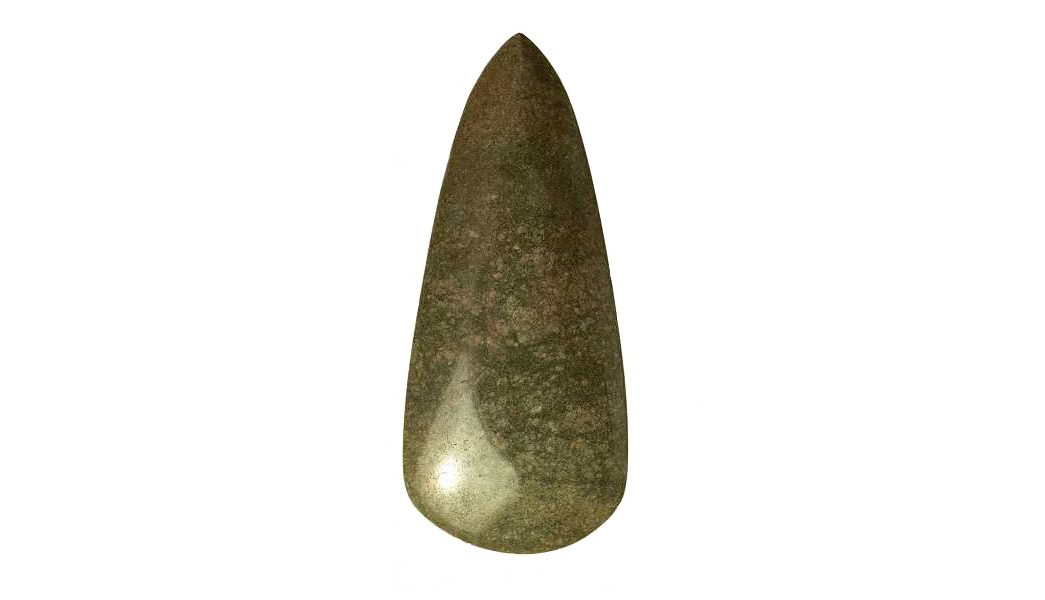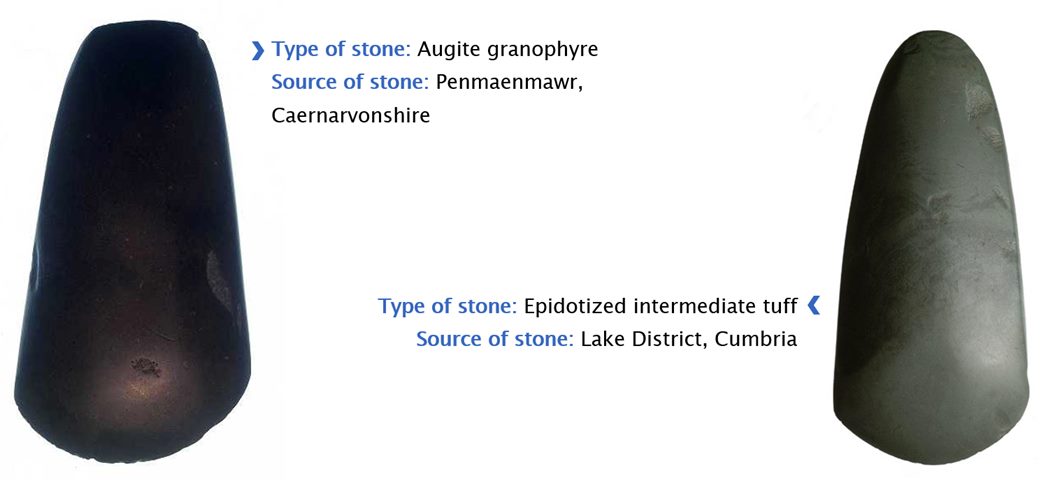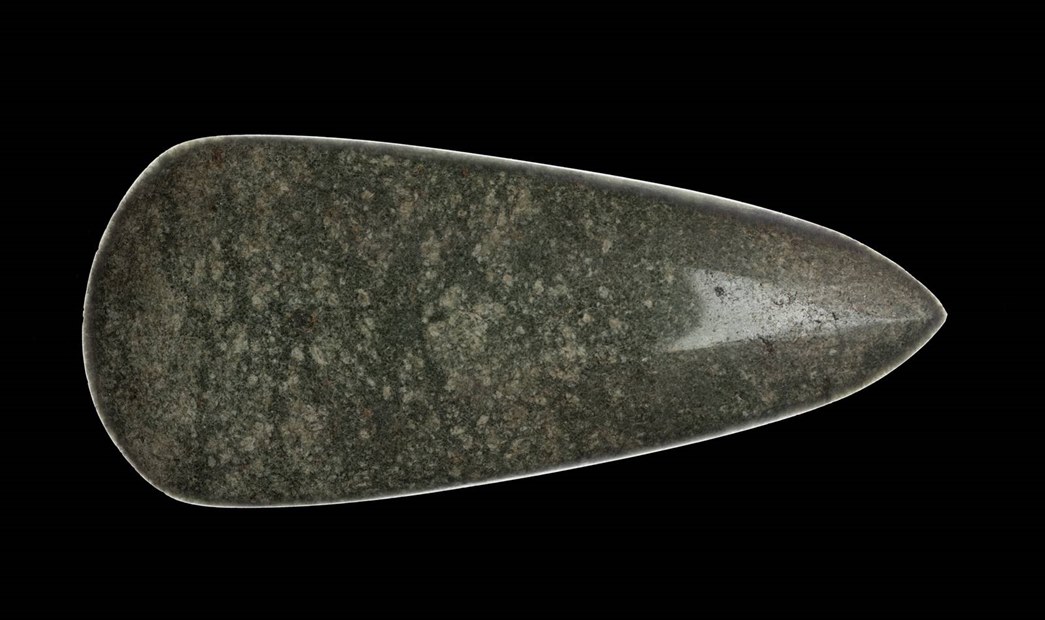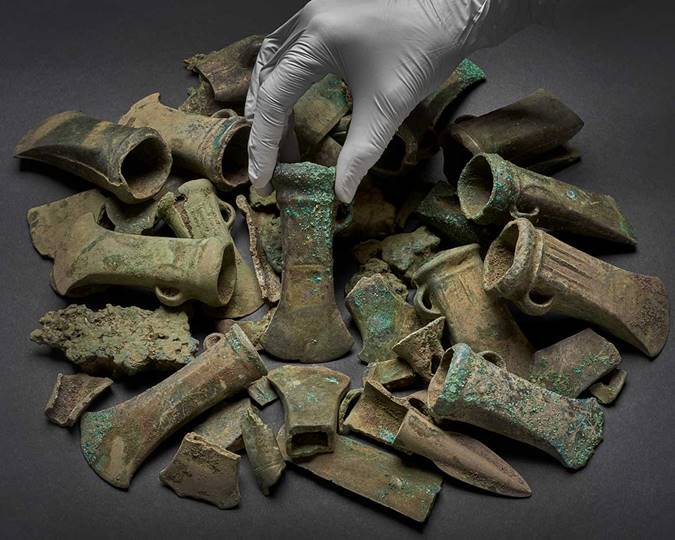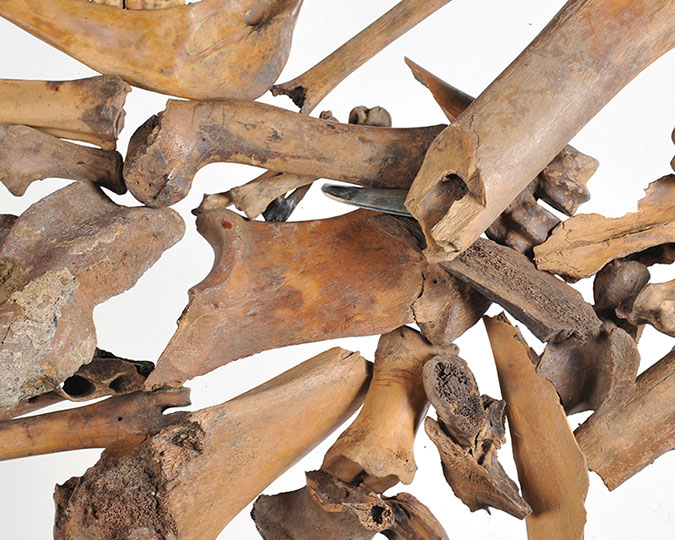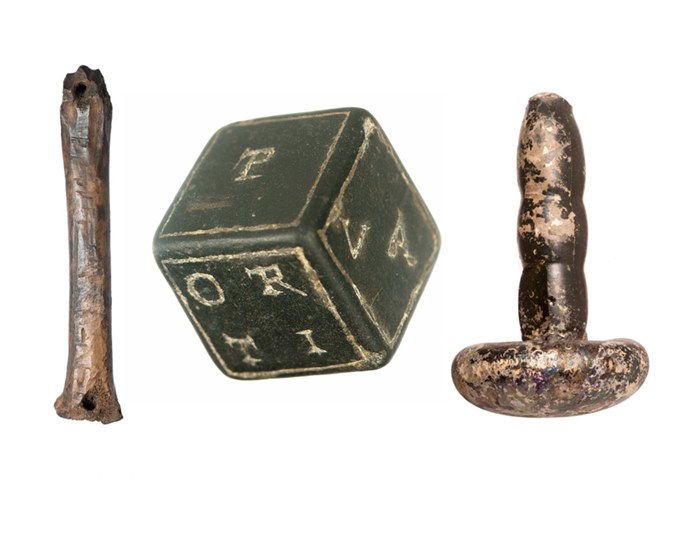This Neolithic jadeite axe that journeyed from the mountains of Italy holds an ancient story of danger, skill and belief. Found in the Thames at Mortlake, this axe-head would have taken a craftsperson around 100 hours to grind and polish! Read on to find out more.
Around 6,000 years ago, skilled miners dug into the mountains in the Italian Alps to extract precious green jade. This jade was shaped and polished to form axes. From there, people travelled with the axes as far as the Black Sea to the east and Scotland in the north-west. Our axe was found in the Thames at Mortlake, southwest London.
Not just an axe…
Axes were an everyday sort of object. The majority of Neolithic people owned an axe. They were a vital piece of kit that allowed you to cut down trees. Large areas of woodland were cleared during the Neolithic as farming was introduced. All those trees provided a lot of wood. Axes were used to shape the wood, to build shelters and boats, make tools and, most importantly, fire. So while they were common tools, they held a very important place within society. People valued their axes and there was a connection to that object that extended beyond the practical. So, perhaps, it was fitting to use this rare and beautiful jade to make an axe.
Could it be used?
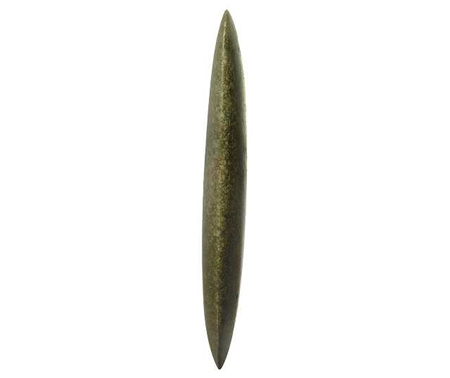
A profile view of the axe shows how it was shaped to be very thin.
Jadeite is a very strong type of jade. This axe from Mortlake has been identified as jadeite. The earliest jade axes were strong enough to be used. However, the later axes were shaped to be very thin, to accentuate the beautiful qualities of the stone. It is unlikely these would work, they would probably fracture if used on wood. The Neolithic craftspeople were very skilled at creating effective tools but the appearance of the final piece was also important.
How did we live?
The Neolithic was a time of enormous change and transformation. Around 6,000 years ago, people travelled from the Continent bringing a new way of life with them. They introduced farming to this island. Before this, the British population lived a mobile life. They hunted animals and birds, gathered fruit and plants, and they caught fish using harpoons, nets and traps. Fish and other marine life made up a large proportion of their diet. The new population of people from the Continent brought domesticated cows, pigs, sheep and goats with them, as well as seeds. They brought the idea and the building blocks of a farming, settled lifestyle with them. These two populations may have interacted and mingled and gradually farming became the dominant lifestyle.
The journey of the jadeite axe
At this time, the main form of transport was by boat, along rivers and the seas. People travelled long distances, moving animals and materials such as good quality stone. They also shared ideas, news and stories. When they met the people already living here, new tools such as this jadeite axe would have impressed and amazed them. Did this create the demand for polished axes? That’s unclear but around this time, we begin to see polished axes made in flint as well as other stone from places such as Wales, Cornwall, Cumbria and Scotland. They were beautiful and practical.
Hours and hours and hours of polishing
People invested a huge amount of time and effort to create these tools. To make a flint axe it would take around an hour to flake the flint into the shape of an axe. To polish it, would take approximately 40 more hours. Flint is a very hard, microcrystalline rock made of silica. It is similar to glass which is mostly silica. As such, it cannot be carved but is shaped by ‘knapping’ — striking the flint with a hammer stone to remove flakes. The polishing does not change the effectiveness of the axe as a tool. To make a jade axe it would take more than 100 hours of grinding and polishing!
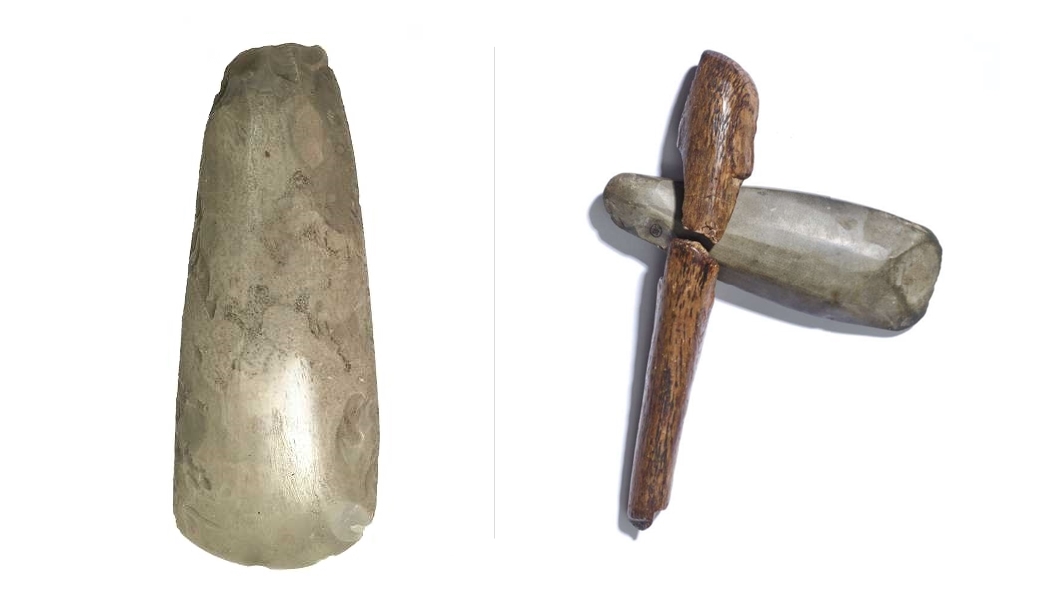
(left) A polished flint axe, that would have taken approximately 40 hours to polish to achieve this smooth surface. (ID no.: A1557) On the right is an example of a Neolithic axe with its handle. (©The Trustees of the British Museum)
First impressions
When this jade axe was first brought to Britain, it would have really impressed the people living here. A thing of beauty, something never seen before. In daylight, the stone has an almost glass-like appearance with different shades of green. So smooth, a very tactile object, so lovely to hold. By firelight it would sparkle as the light danced across the surface. If the axe was held up to the fire, it would almost glow as the light travels through the thinnest part of the axe — the edges. This axe may have seemed magical.
The power of nature
For the Neolithic people, objects held power and meaning. This was linked to the place where the raw materials had come from and the journey from being created to the people who owned them. The jade was mined from a dangerous place. The mountains required skill, respect and knowledge in how to safely travel through them and, within them, to access the jade. This jadeite has been mined from deep within the mountains and brought into the daylight. The colour green of the jade may have also been linked to the colour of fresh, fertile plants with new growth appearing in spring, marking the end of the long, dark winter.
How the world was viewed and understood was very different then compared with today. It is thought that their understanding of the world was divided into the ‘below world’ — beneath the ground, and the ‘above world’ — the sky with the stars and sun, and then the ‘world where people walked’. The rivers were not just a link between physical places but may also have been viewed as a link between the above world and below world. Possibly, also between life and death. Many of the beautiful polished axes, including our jadeite axe, were found in the river. This is not accidental, the river was a powerful place and these objects were deliberately placed within it. Perhaps to give thanks, perhaps as an offering to ensure safe travel or continued prosperity, we will never know why.
This axe holds an ancient story of danger, skill and belief. It is also one of wonder. There are still many questions about what life was like for people living in the Neolithic period, but objects like this can give a glimpse into their lives.








